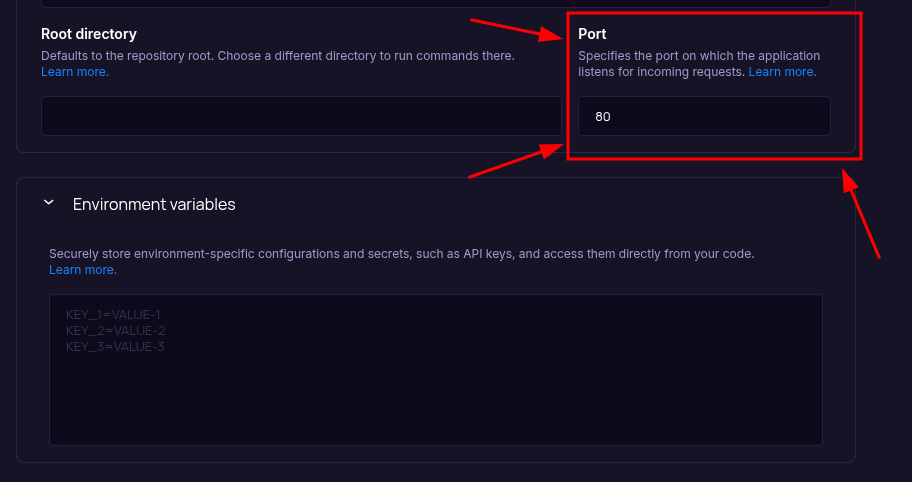Deploy Next.js App on Seenode | Next.js Hosting & Deployment Guide
This guide explains how to deploy your existing Next.js application to seenode.
Prerequisites
Section titled “Prerequisites”Before you begin, ensure you have:
- A seenode account at cloud.seenode.com
- Git configured on your machine
- Existing Next.js project ready to deploy (App Router or Pages Router)
- Node.js 18+ locally
Configure for seenode Deployment
Section titled “Configure for seenode Deployment”Port Configuration
Section titled “Port Configuration”Your service must listen on the same port that you configure in the Port field for the web service. Next.js defaults to port 3000 for next start, so the simplest option is to use 3000 both in your start script and in the dashboard.
For a deeper dive into how ports work on seenode, see Configuring Your Application’s Port.
{ "scripts": { "dev": "next dev --turbopack", "build": "next build --turbopack", "start": "next start -p 3000" }}Recommended Project Basics
Section titled “Recommended Project Basics”- Place your App Router files under
src/app/(e.g.,src/app/page.tsxandsrc/app/layout.tsx). - API routes can live under
src/app/api/*. - Ensure your app builds locally with Turbopack or the default builder.
Directory/your-nextjs-app
- package.json
- next.config.js
Directorypublic/
- …
Directorysrc/
Directoryapp/
- layout.tsx
- page.tsx
Directoryapi/
- hello/route.ts
- .gitignore
Deploy on seenode
Section titled “Deploy on seenode”Push to Git
Commit your project and push it to GitHub or GitLab.
Create a Web Service
From the seenode Dashboard, create a new Web Service and connect your Next.js repository.
Configure Build & Start
seenode detects a Node.js project. Configure:
- Build Command: npm ci && npm run build
- Start Command: npm start

Set the Port field (above Environment Variables) to the value your app listens on. Next.js defaults to
3000fornext start, so a common choice is to set the Port field to3000as well. You can choose a different port (for example,4000) as long as yournext start -p …command and the Port field match. The field starts empty, so set it before your first deploy. After the service is created, you can change the port from the project’s Settings tab.- Build Command:
Choose Pricing Tier
Select your preferred instance size and create your service.
Deploy
Click Create Web Service and watch logs until your web service is live.
Success
Once complete, your Next.js application is accessible via your service’s URL.
Starting from Scratch?
Section titled “Starting from Scratch?”If you don’t have a Next.js project yet:
Option 1: Use our Template (Recommended)
Next.js Web Service Template
Deploy a minimal Next.js web service with sensible defaults for seenode.Option 2: Create from Next.js Docs + seenode Setup
Follow the official Next.js documentation to create a new project, then return here for seenode-specific steps.
seenode-Specific Setup Steps:
- Ensure
package.jsonhasbuildandstartas shown above. - Use a production start command that matches the Port field you configure on seenode, for example, if you set the Port field tonext start -p 3000.3000
- Push to your Git provider and create a Web Service in seenode.
Next Steps
Section titled “Next Steps”Connect to a Database
Add PostgreSQL or MySQL for dynamic web services with server-side features
